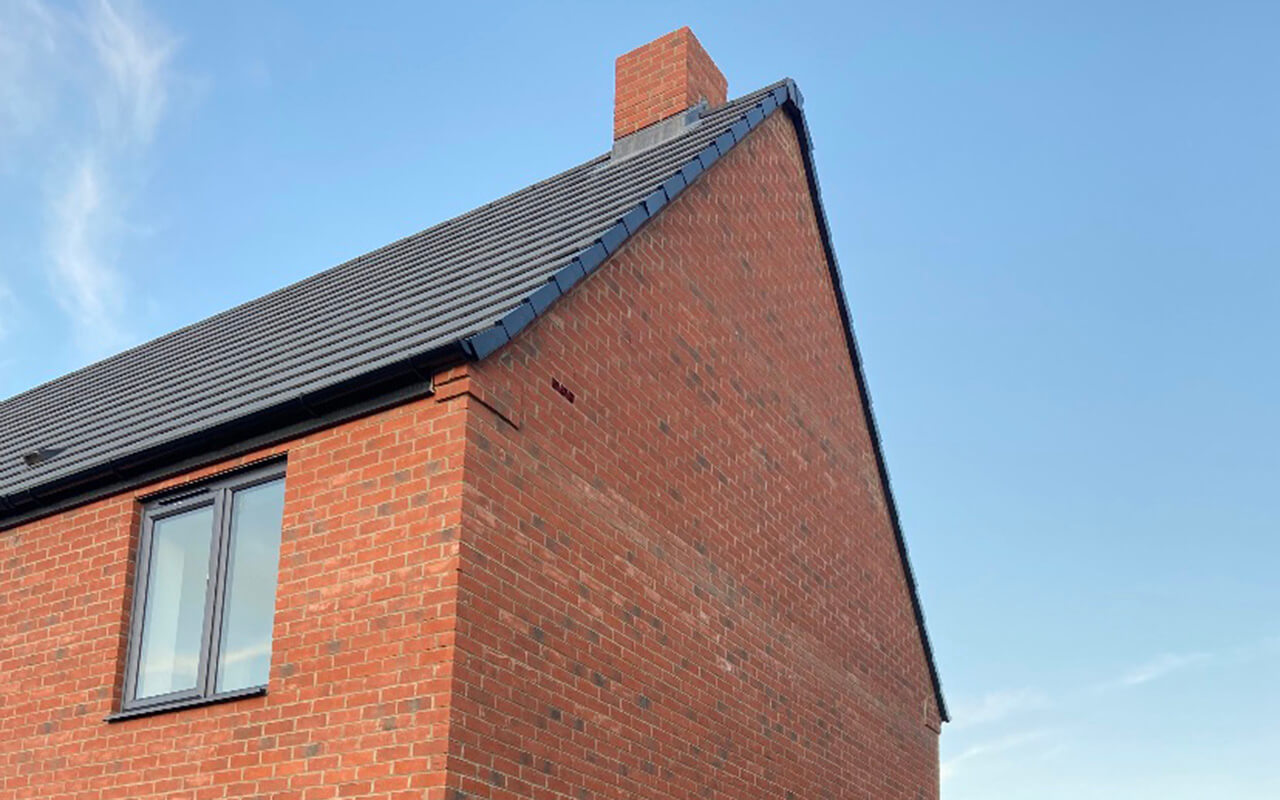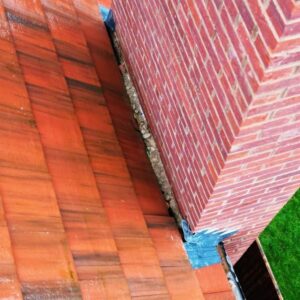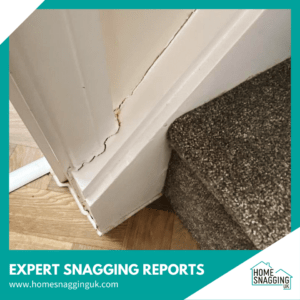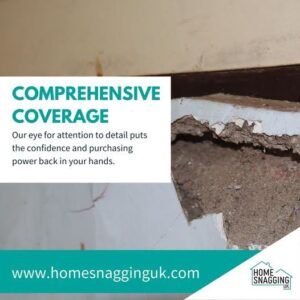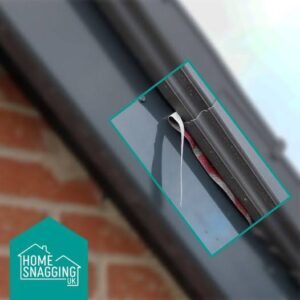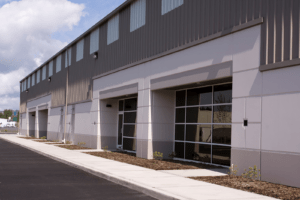Subsidence in the UK
Understanding Subsidence and Its Impact
Subsidence, the gradual sinking or settling of the ground’s surface with little or no horizontal motion, poses a significant risk to properties across the United Kingdom. For homeowners and potential buyers, recognizing the signs of subsidence—such as cracks in walls, doors failing to close properly, and uneven floors—can be critical in safeguarding one’s investment and ensuring the structural integrity of their property. At Home Snagging UK, our mission is to bring awareness and solutions to these often overlooked, yet potentially devastating issues.
The Dual Threat: Climate Change and Historical Factors
In recent years, the UK has seen an uptick in subsidence issues, largely driven by two main factors: climate change and historical land use. The changing climate, marked by extreme weather patterns, has led to longer dry spells, causing the soil—particularly clay-rich soil, prevalent in many parts of the UK—to contract, increasing the risk of subsidence. Additionally, historical factors, such as old mine shafts and the legacy of industrial activities, have left certain areas more susceptible to ground movement.
Homeowners across the UK, especially in high-risk areas, are facing the dual challenge of adapting to the impacts of climate change while also contending with the geographical and historical peculiarities of their locales. It’s a growing concern that requires a proactive approach, combining vigilant property assessment with a deep understanding of the underlying causes of subsidence.
At Home Snagging UK, we emphasise the importance of early detection and informed decision-making. By staying ahead of subsidence risks, homeowners can not only protect their property but also contribute to a broader understanding and mitigation of this complex issue. As we delve deeper into the science of subsidence and explore its various impacts and solutions, our goal is to empower property owners with the knowledge and tools they need to ensure their homes remain safe, secure, and resilient in the face of both current and emerging threats.
The Science of Subsidence
What is Subsidence?
Subsidence refers to the phenomenon where the ground beneath a property or land area sinks or settles, leading to potential damage to structures built on the surface. Unlike landslides, which involve movement down a slope, subsidence is characterised by vertical movement without significant horizontal displacement. This process can occur over large areas or be localised, affecting single properties or specific sites.
The conditions leading to subsidence are varied but often involve changes within the soil that supports buildings and infrastructure. These changes can result from natural processes such as the drying and shrinking of clay-rich soil, the compaction of ground layers, or the dissolution of underground rock formations. Human activities, including mining, groundwater extraction, and the alteration of natural drainage patterns, also play a significant role in triggering subsidence.
Factors Contributing to Subsidence
Soil Types
The type of soil a property is built on can significantly influence the risk of subsidence. Clay soils, in particular, are highly susceptible to changes in moisture content. During dry periods, clay can shrink, creating voids beneath foundations, while in wet conditions, it can expand. This shrink-swell cycle puts stress on building foundations, leading to cracks and structural damage. Sand and gravel layers, on the other hand, may shift or wash away under heavy rainfall or flooding, undermining the ground support.
Climate Change
Climate change exacerbates subsidence risks through increased frequency and severity of weather extremes. Longer, drier summers lead to soil dehydration, especially in clay-rich regions, amplifying shrink-swell cycles. Conversely, intense rainfall events can oversaturate soils, increasing the weight on the ground and promoting subsidence in areas prone to compaction or washout. The changing climate patterns underscore the urgency for homeowners to understand and mitigate the risks of subsidence.
Human Activities
Beyond natural factors, human-induced changes to the landscape significantly contribute to subsidence risks. The extraction of natural resources, such as coal mining or the pumping of groundwater, can cause the ground to collapse or settle. Urban development often alters natural water drainage, potentially leading to soil instability. Moreover, the weight of buildings and infrastructure can compress the ground, especially where the underlying soil or rock is weak or prone to shrinkage.
At Home Snagging UK, we highlight the importance of recognizing the diverse causes of subsidence and adopting comprehensive strategies to manage these risks. Whether through better construction practices, informed land use planning, or proactive property maintenance, understanding the science of subsidence is the first step toward protecting your home and investment from potential damage.
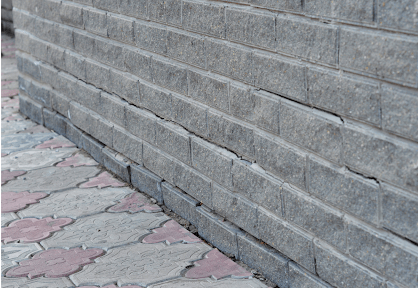
UK Regions at High Risk
Understanding the geographic distribution of subsidence risk across the UK is crucial for homeowners, potential buyers, and urban planners. This section outlines the regions identified as particularly vulnerable to subsidence, drawing attention to the underlying factors that contribute to their heightened risk.
Location | Risk Factors | Source |
London and the South East | Clay-rich soils in the southeast, including London, make this area highly susceptible to shrink-swell subsidence. | British Geological Survey (BGS) (British Geological Survey) |
Northern Cities | The history of industrial mining and its legacy in Northern England indicate a potential for subsidence risk due to factors like old mine shafts. | Informed by the historical context of industrial activities in Northern England. |
Midlands | The presence of varied geological features, including significant areas of clay, contributes to the subsidence risk associated with moisture variation in soils. | Geobear UK (Geobear) |
South West England | The region’s geological diversity and historical coastal erosion processes might contribute to increased subsidence challenges. | Inferred from the geological diversity and historical context of the area. |
Bristol | The presence of old mine shafts in Bristol, with a potential impact on as many as 170,000 existing homes, presents a unique subsidence risk. | Highlighted example for Bristol due to specific subsidence factors related to old mine shafts. |
The Human and Economic Impact
Housing and Infrastructure
The effects of subsidence on residential areas and critical infrastructure are profound and multifaceted. For homeowners, the immediate impact is often seen in the form of structural damage to properties, including cracks in walls and floors, doors and windows that no longer fit their frames, and in severe cases, a total loss of structural integrity. Such damage not only compromises the safety and comfort of residents but can also lead to significant financial strain as they seek to repair and reinforce their homes.
Infrastructure is equally vulnerable, with roads, bridges, pipelines, and public buildings all at risk of damage from subsidence. This can disrupt transportation, utilities, and services that communities rely on, often requiring costly and extensive repairs. The disruption extends beyond the immediate area, potentially affecting regional connectivity and economic activities.
Insurance and Financial Considerations
Subsidence has a direct impact on insurance premiums and property values, making it a critical economic concern for homeowners and the real estate market. Properties identified at risk of subsidence often face higher insurance premiums to cover the increased risk of structural damage. In some cases, obtaining insurance coverage can become more challenging, requiring homeowners to seek specialised policies that offer the necessary protection.
The potential for subsidence can also affect property values. Homes in areas known for subsidence risk may see a decrease in market value, reflecting the potential costs and challenges associated with maintaining the property. This can deter buyers, narrowing the market and potentially leading to longer sales processes. For sellers, disclosing the risk of subsidence is legally required, adding another layer of complexity to real estate transactions.
At Home Snagging UK, we understand the stress and uncertainty that subsidence can bring to homeowners and communities. By emphasising the importance of early detection through detailed property assessments and encouraging a proactive approach to maintenance and repair, we aim to mitigate the human and economic impacts of subsidence. Educating property owners on the importance of appropriate insurance coverage and realistic property valuation can help manage the financial risks associated with subsidence, ensuring that homes remain safe, secure, and desirable places to live.
Mitigating the Risks
Early Detection and Assessment
The key to managing subsidence risk effectively lies in early detection and comprehensive assessment. Subsidence surveys are crucial for identifying potential issues before they escalate, offering homeowners a clearer understanding of their property’s stability. These surveys typically involve examining the exterior and interior of a property for signs of movement, alongside detailed investigations into local geological conditions.
The British Geological Survey (BGS) Property Subsidence Assessment dataset provides an invaluable resource in this regard. It offers detailed insights into the shrink-swell hazard at both the individual property and postcode levels for England and Wales. By leveraging this dataset, homeowners and professionals can pinpoint areas at higher risk and make informed decisions regarding property purchase, maintenance, and insurance.
Innovative Solutions and Repairs
Addressing subsidence once detected involves a range of modern techniques tailored to stabilise the ground and prevent further movement. One of the most innovative solutions in recent years is geopolymer injection. This method involves injecting a specially formulated resin into the ground beneath the affected structures. The resin expands, filling voids and stabilising the soil, effectively lifting and re-supporting the foundations with minimal disruption to the property.
Other repair methods include traditional underpinning, where new foundations are inserted beneath the existing ones to provide greater stability, and the use of helical piles, which can be screwed into the ground to support and lift buildings. These solutions highlight the advancements in subsidence repair, offering more efficient, less invasive options for homeowners.
Community and Policy Responses
The fight against subsidence isn’t just a battle for individual homeowners; it requires a collective effort from communities and policymakers. Local authorities can play a pivotal role by ensuring that planning regulations consider subsidence risks, particularly in areas known for their vulnerability. Community groups can raise awareness, share resources, and support affected homeowners, fostering a proactive approach to subsidence management.
On a broader scale, policy initiatives aimed at monitoring and mitigating the effects of climate change can help reduce the long-term risk of subsidence. This includes investing in green infrastructure to manage stormwater runoff, preserving green spaces to maintain natural soil moisture levels, and enacting policies that limit groundwater extraction.
Home Snagging UK advocates for a multi-faceted approach to subsidence risk management, emphasising the importance of early detection, innovative repair techniques, and community and policy engagement. By working together, homeowners, professionals, and authorities can safeguard properties and communities against the challenges posed by subsidence, ensuring a stable and secure environment for all.
Conclusion
Understanding and addressing the risks of subsidence is crucial for homeowners across the UK. With climate change and historical factors contributing to an increasing subsidence threat, it’s more important than ever to stay informed and proactive. Early detection, innovative repair solutions, and a collective response from communities and policymakers are key to mitigating the effects of subsidence on our homes and infrastructure. By prioritising awareness, prevention, and repair, we can safeguard our properties and ensure the stability and security of our living environments.
Reach Out to Us
If you’re on the cusp of ensuring your new home is free from defects, or if you have queries regarding the snagging process, Home Snagging UK is at your service. Our team, equipped with the latest technology and a meticulous approach, is committed to providing you with peace of mind and a home that meets your expectations, free from any faults. Do not hesitate to contact us:
- Phone: 01302 957388
- Email: [email protected]
Whether you’re approaching the completion of your new home or have recently moved in, our professional snagging inspection services are tailored to your needs. Reach out today to safeguard your investment and ensure your home is prepared for you to enjoy to its fullest.

